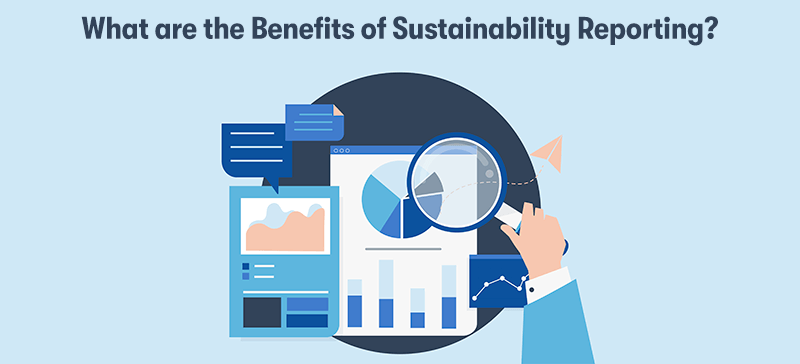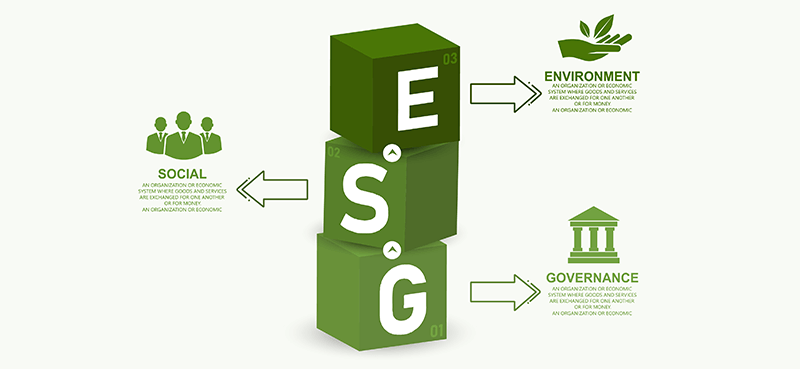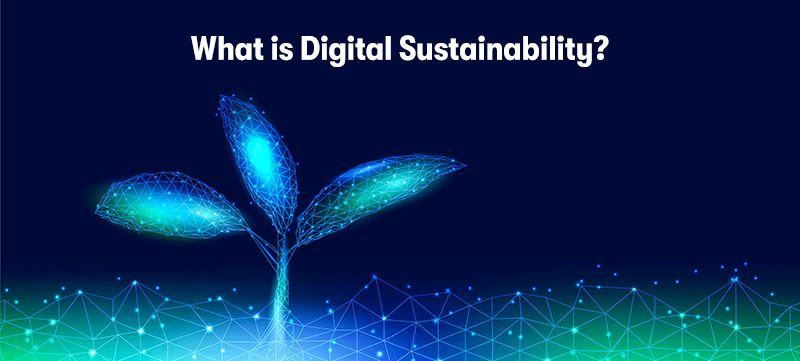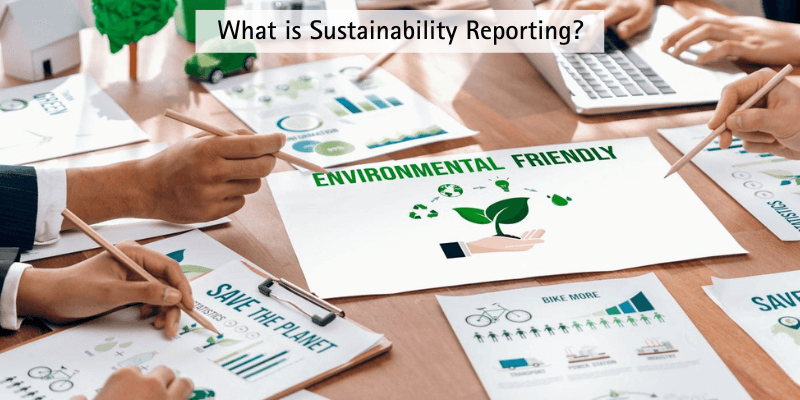What is Sustainability Reporting? An In-depth Guide
Welcome to our deep dive into the world of Sustainability Reporting - a practice that has become increasingly pivotal in today's corporate landscape. In an era where transparency, accountability, and ethical responsibility are at the forefront of business operations, understanding the essence of sustainability reporting is more crucial than ever.
This concept extends beyond traditional financial reporting, encompassing the broader aspects of an organisation's environmental, social, and governance (ESG) impacts.
As we embark on this journey, we'll explore how Sustainability reporting not only reflects a company's commitment to sustainable development but also plays a key role in shaping its interactions with the environment, society, and stakeholders, thereby influencing its long-term viability and success.
What is Sustainability Reporting?

Sustainability reporting is the practice of disclosing information about an organisation's environmental, social, and governance (ESG) performance and impacts. This form of reporting goes beyond traditional financial reporting to provide a broader view of a company's overall performance and commitment to sustainable development. Key aspects of sustainability reporting include:
Environmental Impact
Companies report on how their operations affect the environment. This includes information on greenhouse gas emissions, energy consumption, waste management, water usage, and biodiversity impacts.
Social Responsibility
This aspect covers how the company interacts with its employees, customers, communities, and other stakeholders. Topics such as labour practices, human rights, community development, health and safety, and customer satisfaction are included.
Governance
This refers to the company's internal system of practices, controls, and procedures used to govern itself, make effective decisions, comply with the law, and meet the needs of external stakeholders. It includes corporate governance practices, ethical conduct, risk management, and compliance with laws and regulations.
Economic Performance
Although not the sole focus, sustainability reporting also encompasses economic aspects such as profitability, market presence, and economic impact on society.
The aim of sustainability reporting is to provide a transparent, accountable, and systematic way of communicating sustainability-related information to stakeholders. It helps stakeholders understand the company's long-term value creation process, including its strategy, performance, and risk management approach regarding sustainability issues.
Global standards and frameworks, such as the Global Reporting Initiative (GRI), the Sustainability Accounting Standards Board (SASB), and the Task Force on Climate-related Financial Disclosures (TCFD), offer guidelines and best practices for sustainability reporting. These standards help ensure the reporting is consistent, comparable, and reliable.
Sustainability reporting is becoming increasingly crucial as stakeholders, including investors, customers, and regulators, demand greater transparency and accountability from organisations in addressing global sustainability challenges.
What are the Benefits of Sustainability Reporting?

Sustainability reporting offers a range of benefits for organisations, stakeholders, and society at large. These benefits include:
Enhanced Corporate Reputation
Companies can improve their brand image and reputation by openly communicating their sustainability efforts and achievements. This transparency often increases trust and loyalty among customers, investors, and other stakeholders.
Improved Risk Management
Sustainability reporting helps organisations effectively identify and manage environmental, social, and governance risks. By understanding these risks, companies can implement strategies to mitigate or adapt to them, potentially reducing costs and improving resilience.
Increased Investor Confidence
Investors are increasingly considering ESG factors as part of their investment decisions. Companies that report on Sustainability are often seen as better long-term investments due to their proactive approach to managing risks and opportunities related to Sustainability.
Better Decision Making
Collecting and analysing sustainability data can provide valuable insights into a company's operations, helping to identify areas of inefficiency and opportunity. This can lead to better strategic decision-making and operational improvements.
Compliance and Competitive Advantage
Many regions and industries are seeing a rise in regulations related to Sustainability. Reporting on Sustainability can ensure compliance with these regulations. Additionally, it can provide a competitive advantage as companies demonstrate their commitment to Sustainability compared to peers.
Stakeholder Engagement and Communication
Sustainability reporting facilitates dialogue with stakeholders, including customers, employees, investors, and communities. This engagement can lead to stronger relationships and a better understanding of stakeholder expectations and concerns.
Attracting and Retaining Talent
Many employees, particularly millennials and Gen Z, prefer to work for companies with strong sustainability credentials. Reporting on sustainability initiatives can make an organisation more attractive to current and potential employees.
Contribution to Sustainable Development
By reporting on Sustainability, companies contribute to broader societal goals such as the United Nations Sustainable Development Goals (SDGs). This reporting demonstrates the company's role in addressing global challenges like climate change, inequality, and resource scarcity.
Benchmarking and Performance Improvement
Sustainability reporting allows companies to benchmark their performance against peers and industry standards. This can drive continuous improvement in sustainability practices.
Market Responsiveness and Innovation
The focus on Sustainability can lead to the development of new, sustainable products and services, meeting the evolving demands of a market increasingly concerned with environmental and social issues.
In summary, sustainability reporting can enhance a company's reputation, improve risk management, attract investment, drive innovation, and contribute to societal goals, among other benefits. As the global focus on Sustainability grows, the importance and value of sustainability reporting continue to increase.
What Should a Sustainability Report Include?

A comprehensive sustainability report should encompass a broad range of elements to effectively communicate an organisation's environmental, social, and governance performance and impacts. Key components typically include:
Executive Summary
An overview of the organisation's most significant sustainability achievements and challenges during the reporting period.
Company Profile
Information about the organisation, including its size, structure, operations, products/services, and markets it operates in.
Sustainability Strategy and Goals
A clear outline of the company's sustainability strategy, objectives, and long-term goals. This should include how Sustainability is integrated into the overall business strategy.
Governance and Ethical Standards
Details about the governance structure, including board oversight of sustainability issues, ethical standards, and compliance mechanisms.
Materiality Assessment
Identification and discussion of the sustainability topics that are most material to the business and its stakeholders. This should include an explanation of how these topics were identified and prioritised.
Environmental Impact
Reporting on environmental performance metrics such as energy consumption, greenhouse gas emissions, water usage, waste generation, and impact on biodiversity. This section should also include efforts towards environmental conservation and sustainable resource management.
Social Responsibility
Information on how the company manages its relationships with employees, suppliers, customers, and communities. This might include labour practices, health and safety, human rights, community engagement, and customer satisfaction.
Economic Performance
Data on the organisation's economic impact, including revenue, profitability, economic value distribution among stakeholders, and investment in sustainability initiatives.
Performance Metrics and Targets
Specific, quantifiable performance metrics related to environmental, social, and governance aspects, along with future targets and progress towards these targets.
Case Studies and Examples
Real-life examples or case studies illustrate the company's sustainability efforts and achievements.
Stakeholder Engagement
An explanation of how the organisation engages with its stakeholders, including engagement methods and key issues raised by stakeholders.
Independent Assurance Statement
If applicable, an independent assurance statement can provide credibility to the report by verifying the accuracy and reliability of the information presented.
GRI and Other Framework Indexes
If the report is aligned with global reporting frameworks like the Global Reporting Initiative (GRI), include a content index showing where information related to each GRI indicator can be found.
Challenges and Future Outlook
An honest assessment of the challenges faced in implementing sustainability initiatives and the outlook for future sustainability efforts.
Contact Information
Details for stakeholders to get more information or provide feedback.
A well-structured sustainability report demonstrates transparency and accountability and helps stakeholders understand the organisation's commitment to Sustainability and its impact on society and the environment. As best practices in sustainability reporting evolve, companies are increasingly using digital formats and interactive tools to enhance the accessibility and engagement of their reports.
What Makes a Good Sustainability Report?

A good sustainability report effectively communicates an organisation's commitment to and performance in environmental, social, and governance (ESG) aspects. Key characteristics of a high-quality sustainability report include:
Transparency and Honesty
The report should provide an honest and clear picture of the company's sustainability performance, including both successes and areas for improvement. It should avoid selective reporting or 'greenwashing' – the practice of overstating sustainability efforts.
Relevance and Materiality
The report should focus on the most relevant issues and material to the business and its stakeholders. It should address the concerns and interests of different stakeholder groups, including investors, employees, customers, and the community.
Comprehensive Coverage
The report should cover all significant aspects of Sustainability relevant to the company, including environmental, social, and governance issues. It should provide a balanced view of positive and negative aspects.
Quantifiable Data and Goals
Including specific, measurable data and benchmarks makes the report more credible. Setting clear, quantifiable goals and tracking progress against these goals demonstrates commitment and accountability.
Consistency and Comparability
The report should maintain consistency in how information is presented over time, allowing stakeholders to track progress and performance year over year. Adhering to recognised reporting standards and frameworks (like GRI, SASB, TCFD) enhances comparability with other organisations.
Clarity and Accessibility
The report should be written in clear, understandable language with a logical structure. Avoiding technical jargon or, where necessary, explaining it makes the report accessible to a broader audience. Digital formats and interactive tools can also enhance accessibility.
Stakeholder Engagement
Demonstrating how the organisation engages with its stakeholders and how this engagement has influenced the report adds depth and context.
Forward-Looking Perspective
The report should focus on past and present performance and discuss future goals, strategies, and challenges. This forward-looking perspective is important for understanding the company's long-term sustainability trajectory.
Independent Verification
Third-party verification or assurance of the data and information provided in the report adds credibility and trustworthiness.
Alignment with Global Standards
Aligning with international standards and frameworks helps ensure the report meets global best practices and allows for benchmarking.
Innovation and Best Practices
Highlighting innovative practices and leadership in Sustainability can distinguish the report and demonstrate the company's commitment to continuous improvement.
Case Studies and Stories
Including real-life examples, case studies, and stories can make the report more engaging and illustrate the practical impact of the company's sustainability initiatives.
Visual Appeal and Design
Using visuals, infographics, charts, and a clean layout can make the report more engaging and easier to navigate.
Responsiveness to Previous Feedback
Addressing feedback received on previous reports shows that the organisation values stakeholder input and is committed to improving its sustainability reporting process.
A good sustainability report is important for organisations to communicate their commitment to sustainable development, engage with stakeholders, and demonstrate accountability and transparency in their sustainability efforts.
What are the Different Types of Sustainability Reporting?

Sustainability reporting can take various forms, each serving different purposes and addressing the needs of different stakeholders. The main types of sustainability reporting include:
Integrated Reporting
This approach combines financial and Sustainability reporting into a single, cohesive document. Integrated reports provide a holistic view of the organisation's performance, showing how Sustainability is embedded in its strategy and operations and how it impacts financial results.
Corporate Social Responsibility (CSR) Reporting
CSR reports focus on a company's social and environmental contributions and performance. These reports often highlight initiatives like community engagement, philanthropy, employee welfare, and environmental stewardship.
Environmental, Social, and Governance (ESG) Reporting
ESG reports are more comprehensive, covering various topics, including environmental impact, social responsibility, and corporate governance. These reports are particularly valuable to investors and other financial stakeholders interested in how ESG factors influence risk and performance.
Global Reporting Initiative (GRI) Reporting
GRI is a widely used sustainability reporting framework that offers a set of standards for reporting on economic, environmental, and social impacts. GRI reports are structured according to this framework, providing consistency and comparability across different organisations.
Carbon Footprint Reporting
This type of reporting focuses specifically on an organisation's greenhouse gas emissions and other climate-related impacts. It is particularly relevant for companies in high-emission industries and those committed to climate action goals.
Sustainability Accounting Standards Board (SASB) Reporting
SASB provides industry-specific reporting standards that help businesses disclose material sustainability information to investors. Reports following SASB standards focus on financial material sustainability topics.
Task Force on Climate-related Financial Disclosures (TCFD) Reporting
TCFD reports focus on the financial impacts of climate-related risks and opportunities. They are structured around four thematic areas: governance, strategy, risk management, and metrics and targets.
United Nations Sustainable Development Goals (SDGs) Reporting
These reports align a company's sustainability strategy and performance with the UN SDGs, demonstrating how the organisation contributes to broader global sustainability goals.
Ceres and Other NGO Frameworks
Reports based on frameworks provided by non-governmental organisations (NGOs) like Ceres focus on sustainable business practices, addressing issues like water risk, deforestation, and human rights.
Voluntary Initiatives and Principles-Based Reporting
Companies may also report based on voluntary initiatives or principles they have adopted, such as the UN Global Compact, which focuses on human rights, labour, environment, and anti-corruption.
Industry-Specific Reporting
Some industries have specific sustainability reporting standards or frameworks, reflecting their unique environmental and social challenges.
Custom or Self-Defined Reporting
Some organisations create sustainability reports based on internal criteria and priorities, especially if existing frameworks do not fully address their specific context or stakeholder needs.
Each type of reporting offers different perspectives and insights, and companies may choose one or a combination of these approaches based on their sustainability strategy, stakeholder requirements, and industry-specific issues. The key is ensuring the reporting is transparent, relevant, and aligned with the organisation's sustainability goals and stakeholder expectations.
What is ESG and How Does it Affect Sustainability?

ESG factors have a significant impact on Sustainability for several reasons:
Risk Management
By considering ESG factors, companies can identify and mitigate risks that could significantly impact their long-term Sustainability. For example, environmental risks like climate change and resource scarcity, social risks like labour disputes, and governance risks like corruption can severely affect a company's operations and reputation.
Investment Decisions
Investors increasingly use ESG criteria to screen potential investments. Companies with strong ESG practices are often considered more resilient and better positioned for long-term success, attracting more investment.
Regulatory Compliance
Many governments and regulatory bodies are implementing regulations that require companies to adhere to certain ESG standards. Compliance with these regulations not only avoids penalties but also ensures sustainable business practices.
Corporate Reputation
Companies that excel in ESG practices enjoy a better reputation, which can lead to increased customer loyalty, better employee retention, and overall long-term business success.
Innovation and Market Opportunities
ESG-focused strategies often drive innovation, leading to new products and services that address environmental and social challenges. This can open up new markets and opportunities for growth.
Societal Impact
Beyond business benefits, strong ESG practices contribute positively to societal goals, such as combating climate change, promoting social justice, and fostering transparent and accountable governance.
In summary, ESG is not just a checklist or a compliance requirement; it's a framework that guides companies toward sustainable and ethical business practices, benefiting not only the company itself but also the environment, society, and the economy as a whole.
What is Digital Sustainability?

Digital Sustainability refers to the practice of designing, implementing, and using digital technologies in a way that supports and enhances overall sustainability goals. It encompasses a wide range of activities and considerations, from the energy efficiency of data centres to the lifecycle of electronic devices and how digital technologies can be used to solve environmental and social challenges. Here are the key aspects of digital Sustainability:
Energy-Efficient Technologies
Digital Sustainability involves using and developing technologies that consume less energy. This includes energy-efficient data centres, servers, and networking equipment. Reducing the energy consumption of digital infrastructures is crucial, especially as the demand for data and digital services continues to grow.
Sustainable Design and Production
This aspect covers the entire lifecycle of digital products, from design to production to disposal. It includes using sustainable materials, designing for longevity and repairability, and ensuring proper e-waste management and recycling.
Reducing Carbon Footprint
Digital sustainability efforts aim to minimise the carbon footprint of digital operations. This involves using renewable energy sources to power data centres, adopting cloud computing, which can be more energy-efficient than traditional on-premises solutions, and optimising software for energy efficiency.
Promoting Digital Inclusion
Digital Sustainability also means ensuring equitable access to digital technologies. Bridging the digital divide is essential for social Sustainability, enabling all sections of society to benefit from digital advancements.
Data Privacy and Security
Sustainable digital practices include protecting the privacy and security of users. As digital technologies become more pervasive, ensuring that personal data is handled responsibly is a key part of sustainable digital ecosystems.
Using Digital Technologies for Sustainability Goals
Digital technologies can be powerful tools in addressing broader sustainability challenges. For example, IoT (Internet of Things) devices can optimise energy use in smart buildings, AI can help in climate modelling and predicting environmental changes, and blockchain can enhance supply chain transparency.
Sustainable Business Models
Digital Sustainability also involves creating sustainable business models. This includes models supporting the sharing economy, reducing resource consumption, and promoting sustainable practices through digital platforms.
Policy and Governance
Developing policies and frameworks that support sustainable practices in the digital sphere, including regulations on energy use, e-waste, and data protection, is also a crucial part of digital Sustainability.
In essence, digital Sustainability is about leveraging the power of digital technologies to create a more sustainable world while ensuring that the digital sector operates in an environmentally and socially responsible manner.
Where Can You Learn More About Digital Sustainability?
At Purple Griffon, we offer an ITIL® 4 Specialist Sustainability in Digital & IT (SDIT) training course. This course will help you to:
- Understand how to use the ITIL guiding principles to deliver value by creating sustainable digitally enabled products and services.
- Effectively address VUCA challenges through sustainable strategies, procurement, products and practices.
- Obtain a practical grounding in the key principles of Sustainability.
- Conduct a complete cost-benefit analysis identifying potential risks and opportunities using best practice guidance.
Final Notes on Sustainability Reporting
In conclusion, our exploration of Sustainability and its various facets - from sustainability reporting to the intricacies of ESG and the emergent concept of digital Sustainability - underscores the vital role these practices play in guiding organisations towards ethical, environmentally responsible, and socially conscious operations. Whether through comprehensive and transparent reporting, adherence to ESG principles, or the innovative use of digital technologies, the commitment to Sustainability is clear.
These efforts drive positive change and present opportunities for growth, risk management, and enhanced stakeholder engagement. As we continue to navigate the challenges of a rapidly evolving global landscape, the principles of Sustainability remain a beacon, guiding businesses and communities towards a more equitable, sustainable, and prosperous future.


